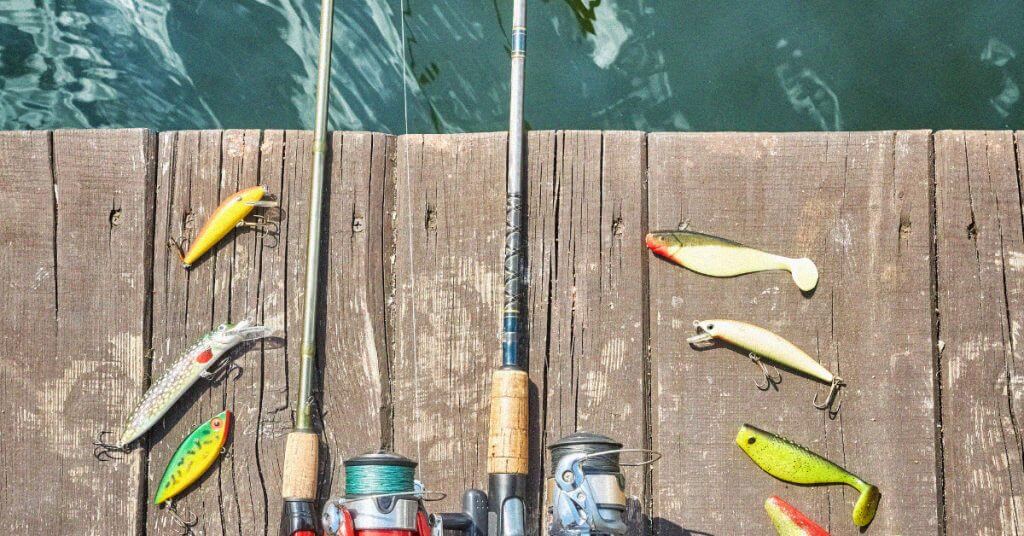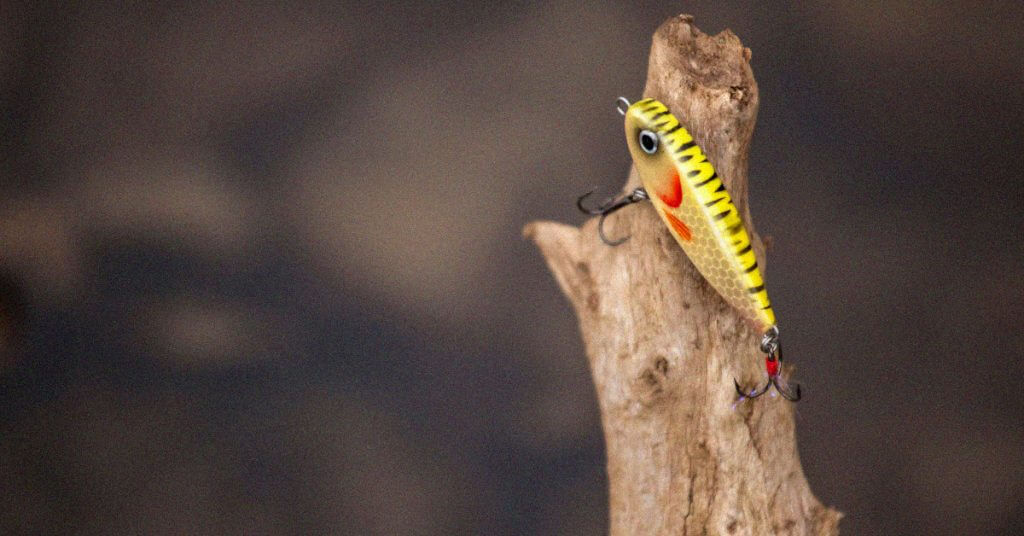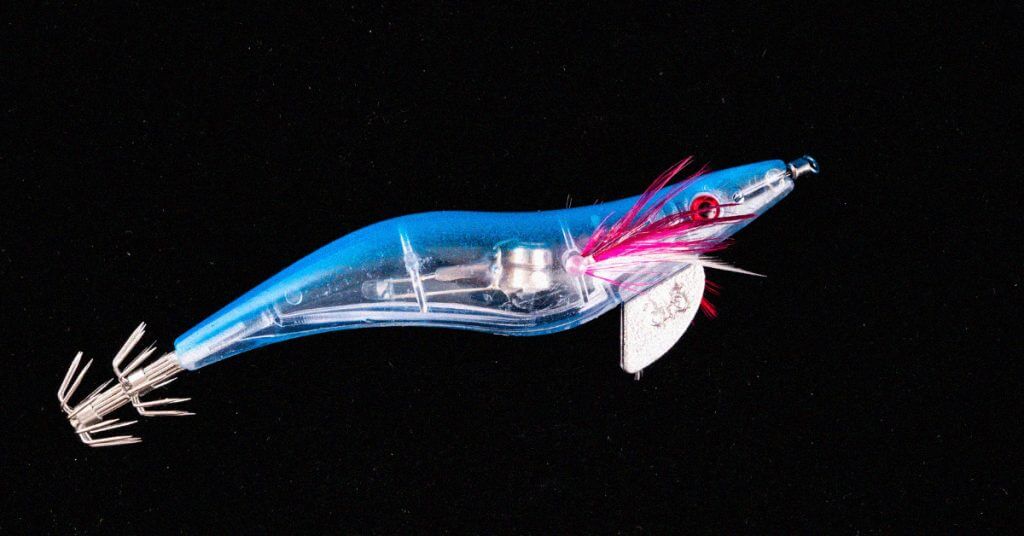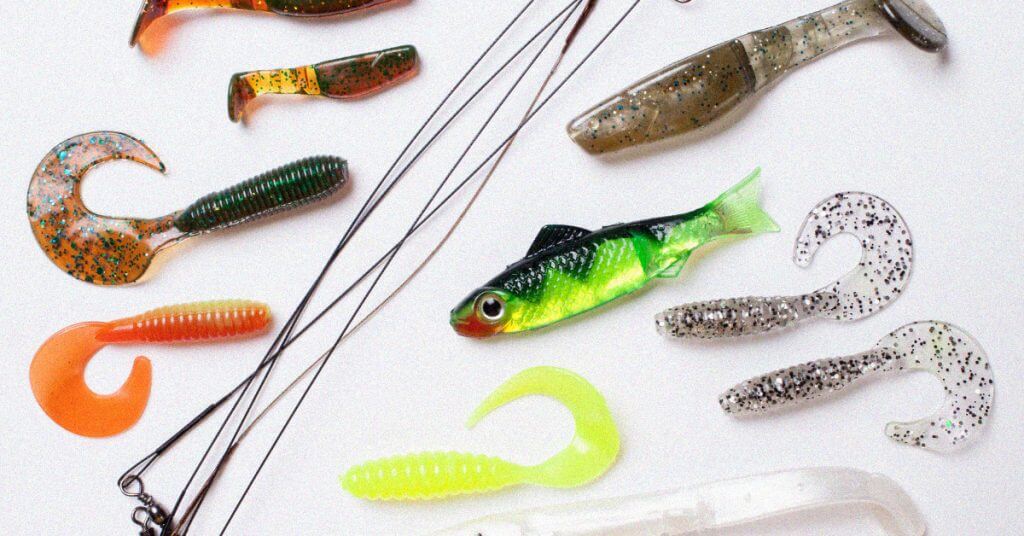Fishing a tube is more common for smallmouth bass but is also effective for largemouth bass fishing.
As you keep reading, you’ll learn everything you need to know to catch your first fish with the time-tested tube.
YourBassGuy.com Community Coordinator Wesley Littlefield explains a few different ways he fishes a tube in this YouTube video!
Where To Fish Tube Baits
To have the greatest success, you need to know where to use a tube. You can fish the best bass fishing spots in your area and still come away empty-handed if you’re not using the proper presentation.
Not every bass fishing hole is ideal for tube fishing, so be prepared for a little trial and error before you figure out which spots are best on your local body of water.
Using fishing tube baits is a good option for most fishing environments. There are certain places where tube bait shines as the best option while bass fishing.
Isolated vegetation and dock piers offer plenty of places for bass to hide.
Isolated Vegetation
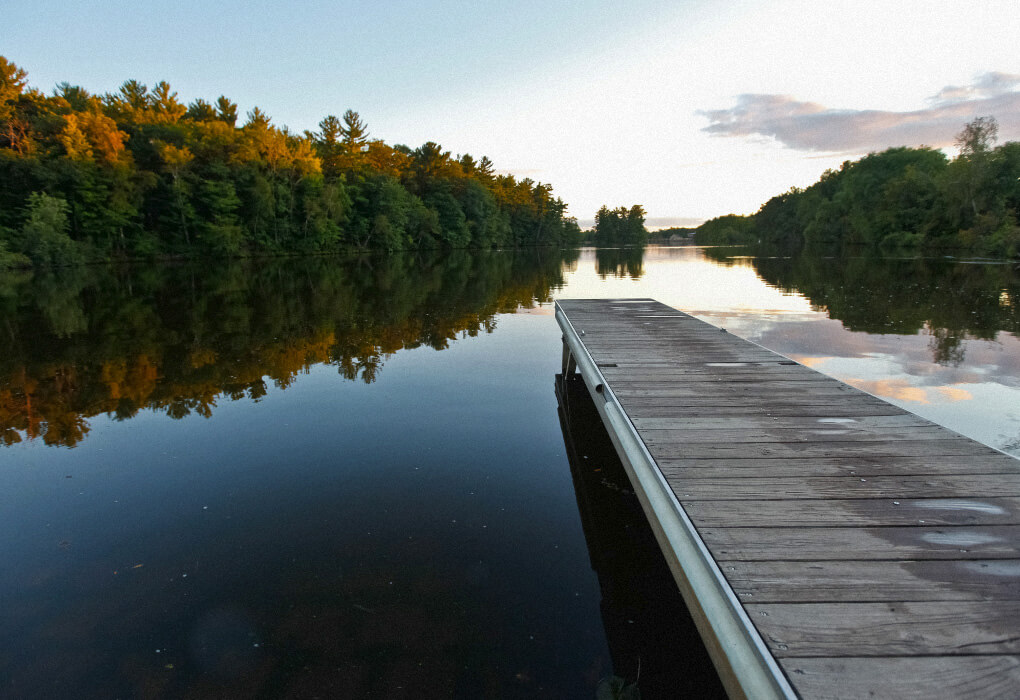
When you see clumps of live grass break out the bass fishing tube because they outshine other bait and tackle in this environment when you rig a tube Texas style.
The fish will have their noses towards the grass, using the grass for shade.
Cast your tube bait as close to the heavy cover as possible and don’t be afraid to cast into it if you’re fishing your tube weedless.
Pitching and flipping tube baits are a great combo for catching bass in matted vegetation.
Dock Piers
Dock piers are similar to isolated vegetation in open water. Dock piers provide structure and shade for the bass to hang out.
It is crucial that your lure has a silent entry.
When you have a sinker peg it keeps your soft plastic and weight together which allows for less of a splash. This entices the bass to react by creating a predator and prey appearance.
A bass’s instinct will kick in as they see the tube, allowing you to reel in some good times!
Standing timber is another place that offers a similar structure to bridge pylons and docks where the tube can shine.
When To Fish Tube Baits
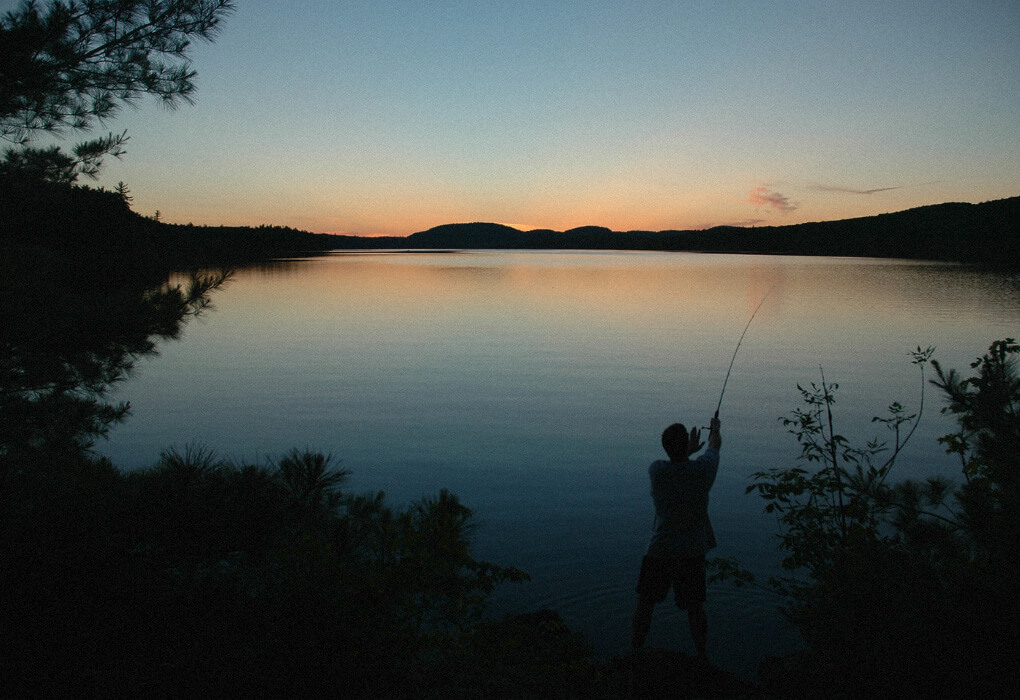
You found your ideal fishing location. You know of a great area in the middle of the open water with isolated vegetation that bass love to hang out.
It is the only place with canopies of weeds for shade, so bass are plentiful.
Next, you need to know when to fish using tube baits. Is there a specific time of day that is better?
Maybe early in the morning or mid-afternoon?
What about different seasons? Is summer fishing the best time to use tube baits, or are they more effective in the spring?
All these questions will help you decide the best time to try tube fishing.
Time of Day
Bass tend to be more active in feeding in low-light environments. This is why shaded areas are better for bass fishing; the bass will be more willing to go after your bait than they would in brightly-lit areas.
If you are heading out for a day of bass fishing, you will have more luck using your tube bait in the early morning or late evening.
Season
You can get more big bites in low-light situations. Fishing in the stormy spring season has its benefits. Cloud cover allows less light to reach the water, creating the ideal environment for bass to feed.
For this reason, the tube works best in the springtime during the spawn but will also work in summer or fall in the right conditions.
Some anglers love a good challenge. Fishing in the winter has its challenges, but in the end, it can be very rewarding.
If you have patience and don’t mind the cold, you can be a successful winter fisherman using the tube on a drop shot rig.
How To Present Tube Baits
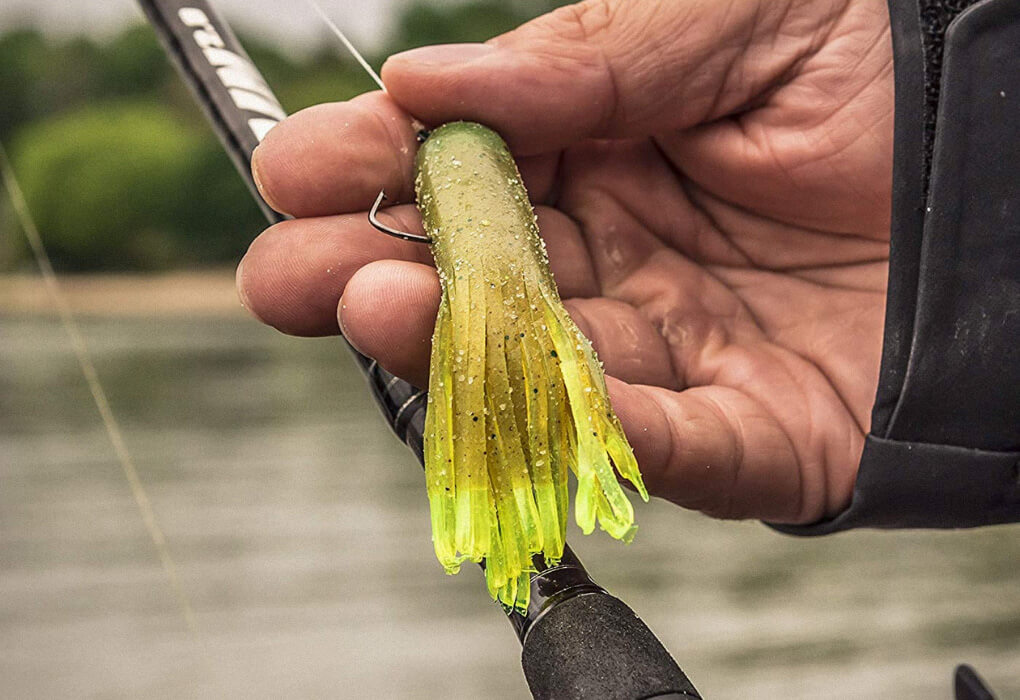
There is another thing we need to consider when fishing a tube; how to rig and present the tube bait. Getting this right can make all the difference.
Sometimes bass want your bait moving and other times they want it sitting still.
Rigging tube baits can be considered a sport in and of itself. The more you do it, the better you will be at it. The reason tube baits were so popular was because they’re versatile.
They can be rigged in many different ways.
A few examples are rigging a tube bait on a jig, Texas rigging a tube bait, and rigging tube baits on a drop shot.
Knowing the difference and executing them well will translate into a higher number of bass caught on each outing.
Along with the actual rigging, the speed at which you fish tubes will also make a difference. Fast, medium, and slow speeds all give different results based on the mood of the fish
Fast
The best time to fish fast with a tube bait is when you use a Carolina rig, round jig, Texas rig, Tokyo rig, or swing head jig.
Fishing relatively fast with these tube jigs will create the appearance of a crawfish or small fish zipping through the water and can get a reaction strike.
You’ll want to fish fast when bass are active, so late spring, early summer, and during the fall transition are excellent times to keep the tube moving quickly.
Medium
You can use the same rigs when you’re fishing fast and for medium-speed fishing.
Adding longer pauses, reeling slower, and bouncing your jig off the bottom of the pond or lake will result in the illusion of an easy meal for the fish to catch.
Fishing at a medium pace is the best way to determine the fish’s mood for the day because you can figure out if they want it moving or sitting still.
Slow
The best rigs for fishing a tube slow are a drop shot, Carolina rig, and weightless. To use a tube bait, slow, cast, let it sink to the bottom, then drag it along the bottom using your rod tip. Reel up the slack, then pull the rod again to create slack.
Fishing a tube slowly works best in cold, cool, or hot water, when the bass aren’t as active.
Best Color Tube Baits for Bass
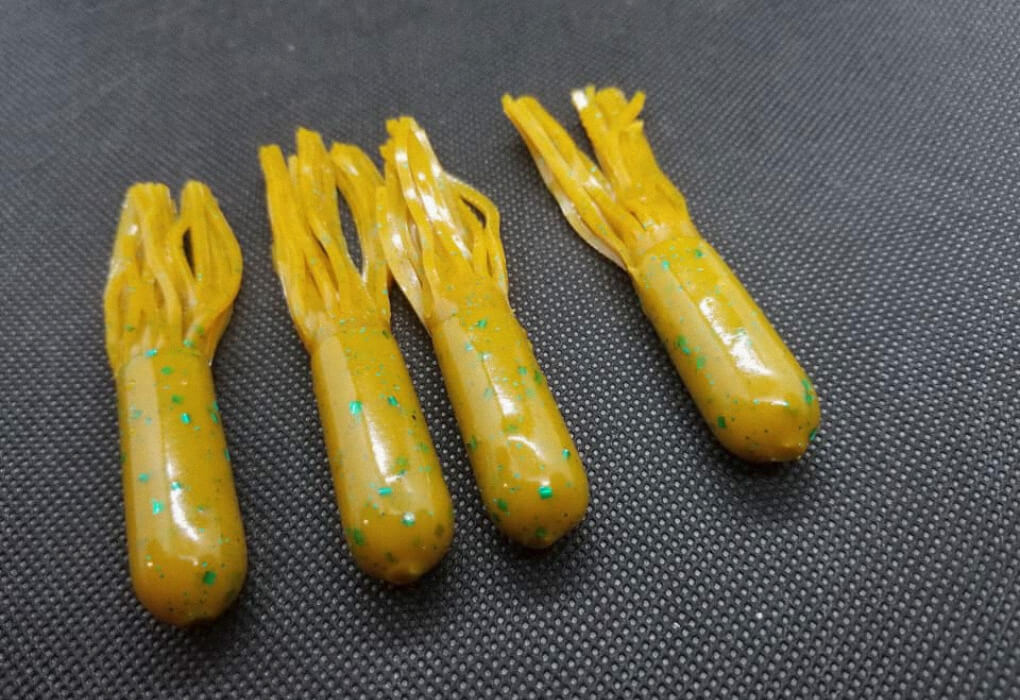
You know where, when, and how to fish a tube. The next thing to add to the list of essentials of tube fishing for bass is the color of the tube bait.
The color of bait you need depends on the type of water you are fishing.
Dingy Water
The visibility is low if you are fishing in dingy, murky, or deep water. Bright and dark colors are the best for a tube bait in this environment. Chartreuse, orange, black, and blue allow the bass to see your tube bait.
Clear Water
Bright colors are not the best option if your fishing clear water, natural and translucent colors work well.
Green pumpkin is a favorite for nearly every angler in just about any water condition, and dipping the tentacles of the tube into chartreuse dye to imitate bluegill adds to the realism of the bait in clear water.
Best Tips for Tube Baits
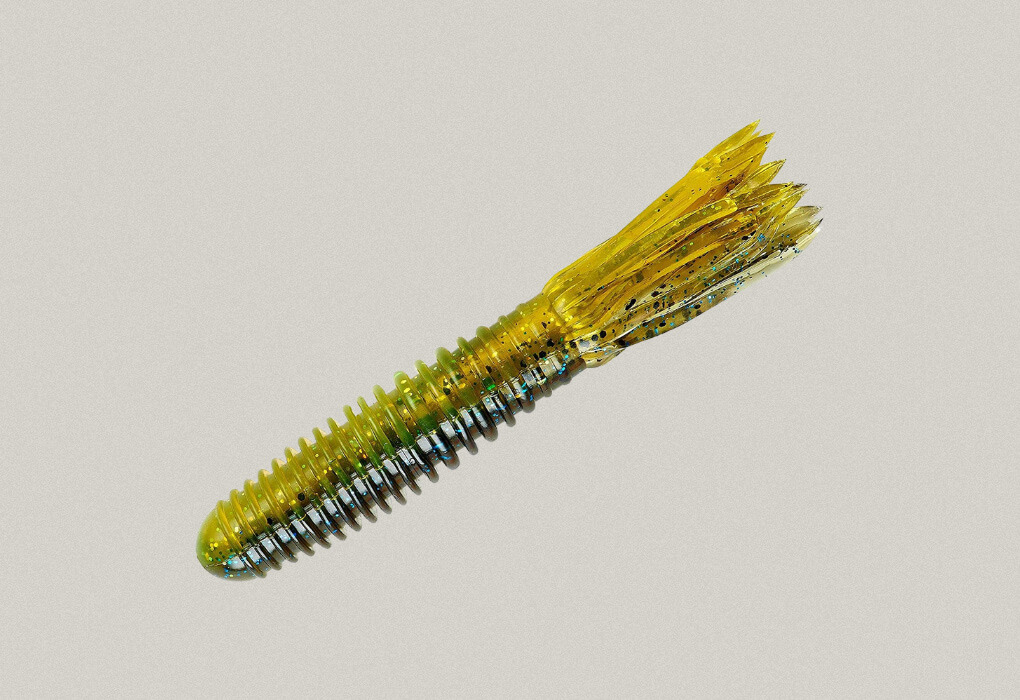
You can modify your tube baits to make them even better fish attractants. These tube fishing tips can help you make the best catch of your life.
Double Tube
Using a second tube behind a Carolina rig or Mojo jig head can double your chances of catching that monster smallmouth!
Floating Tube
Most tubes sink after the hook is inserted, even if they’re weightless. If you add foam inserts, your weightless tube will float.
This provides a new fishing experience that will drive the bass crazy. Try soaking the foam in a scented product for even more success!
Flashy Tube
In some situations, mylar strands added to your tube can cause a trigger that works better than sound. The flashy mylar strands can be added by gluing them onto the hook before threading the flashy hook through the tube bait.
Tube-Spoon
If you are fishing in a heavily pressured location, the fish may have frown leery of flashy fishing lures. The flash might scare them away because they’ve seen it before.
Instead of having such a harsh flash, try adding chrome to the translucent tubes’ inside.
It allows just the right flash to shine through without being obnoxious and gives it a natural, soft look.
Dyed Tubes
As stated earlier, the color of the tube does matter. If the goal is to resemble crawfish, it is best to choose a brown or red dye for your tube. When trying to imitate bluegill dip in chartreuse dye.
Tube on a Spinnerbait
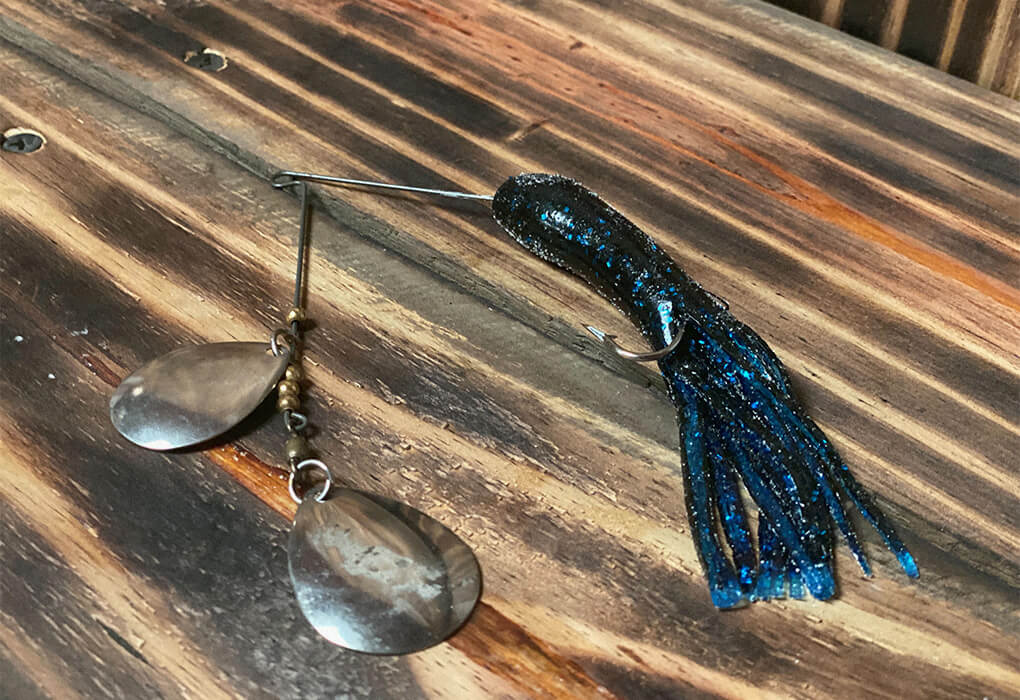
Combining both flash and finesse, adding a tube spinnerbait to your pocket of tricks is a good idea! Thread the tube onto the hook under the head. This gives the spinnerbait a little different look than they’re use to seeing.
Rattling Tube
Adding rattles to your tube can help give it a more natural sound as you bounce it off of rocks or use it like a swimbait.
Fizzy Tube
Adding Alka-Seltzer to your tube can work miracles. The fizzing will tempt any spawning or inactive bass.
Frequently Asked Questions
Everyone has questions. Check out this list of FAQs about tube fishing for bass!
How do you bass fish with tubes?
The best place to bass fish with tubes are bluffs, steep banks, isolated vegetation, or other shady areas. Cast the tube on a 0.25-ounce head and allow it to bounce down the wall of the bank.
Are tubes good for bass?
Yes, tubes are good for bass fishing. 3- to 5- inch tubes are known for catching smallmouth bass, but they have also caught many largemouth bass.
Tubes are versatile, which makes them a favorite among anglers.
Do tubes work for largemouth bass?
Yes, tubes work for largemouth bass. They are known for smallmouth bass fishing but are also effective in largemouth bass fishing.
Are tubes good in summer for bass?
Yes, tubes are good in summer for bass. Tubes are some of the most adaptable soft baits on the market.
Their range of effectiveness attracts trophy smallmouth and largemouth bass alike. It is an excellent soft plastic bait in your lineup for summer bass.
Last Cast
Using all of these tube fishing for bass tips, tricks, and techniques will elevate your bass fishing to the next level!
Though this technique has waned in popularity it’s still an effective soft plastic lure to have in your arsenal.
I’d love to hear some of your tube fishing tips in the comments below!

